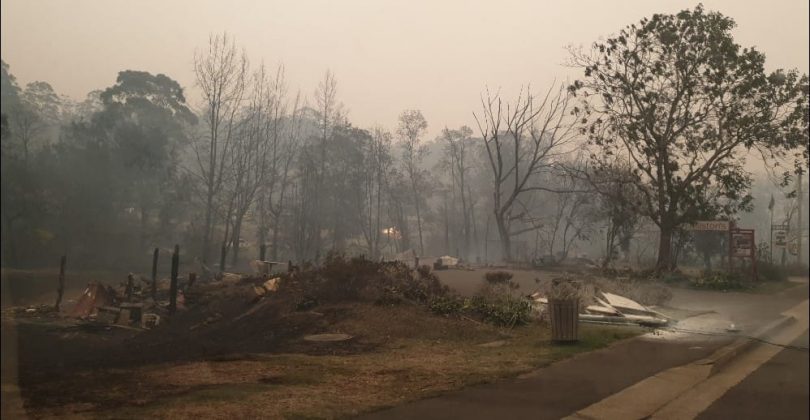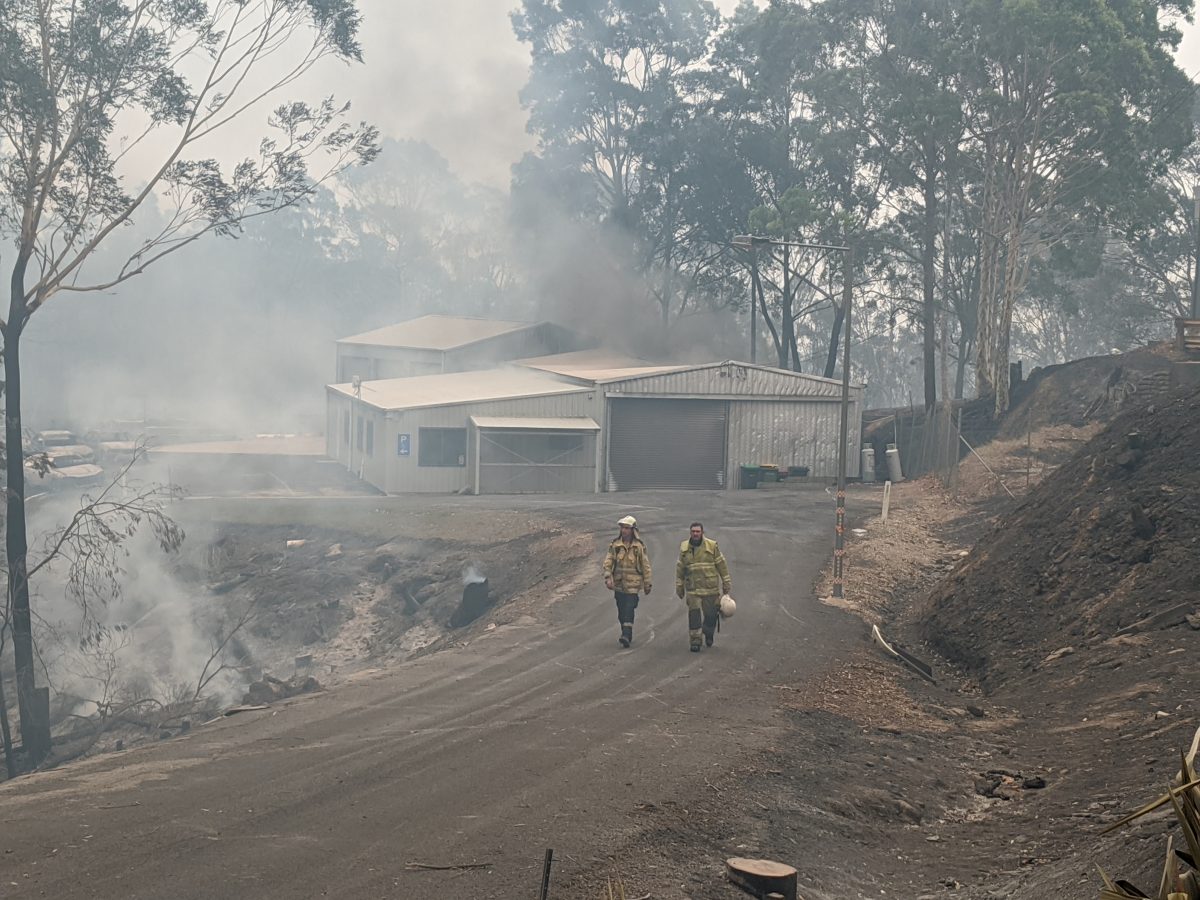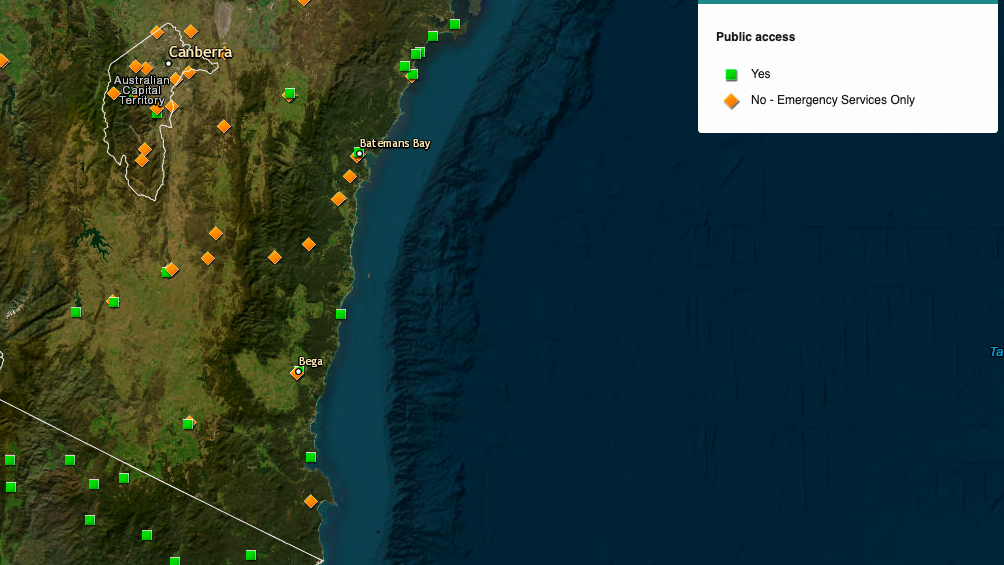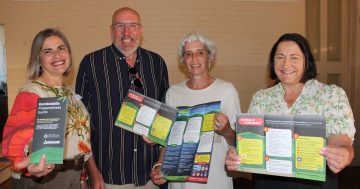
Roman Leathergoods in Mogo was razed during the Black Summer bushfires. Photo: Facebook.
The Black Summer bushfires highlighted the vulnerabilities of the region’s communications infrastructure.
The ABC’s transmission mast at Mount Wandera near Mogo melted, cutting emergency broadcast radio to the Batemans Bay area. Many people on the Far South Coast were without mobile phone and internet services for days.
The Australian Communications and Media Authority reported that between 19 December, 2019, and 31 January, 2020, 1406 telecommunications facilities, including 818 in NSW, were impacted by the bushfires directly or indirectly.
Power outages were the cause. Direct fire damage accounted for only 1 per cent of outage incidents.
Of the 703 facilities that experienced an outage exceeding four hours, the average time to restore communication was 3.5 days, often hampered by site access restrictions such as fallen trees.
For rural firefighters and emergency services, the damaged telecommunications infrastructure took the familiar challenges, such as black spots, radio dead zones and areas with already sporadic connectivity, to new levels.
Five years on from the bushfires, is the region’s communications infrastructure more resilient?

The NSW SES Batemans Bay Unit headquarters was destroyed in the 2019-20 bushfires. Photo: Mike Day, SES Eurobodalla local commander.
First, RFS members need to communicate with each other, with other emergency services, and with the general public.
An RFS spokesperson said the NSW Government had funded the installation of Vehicle as a Node (VaaN) technology in more than 5000 operational vehicles.
VaaN technology uses Starlink satellites, enabling first responders to continue using radios and handheld devices anywhere, 24/7, through 4G and satellite connections.
State Member for Bega Dr Michael Holland said the technology also meant the RFS could support communities until longer-term solutions were implemented. During October’s widespread power outages across Far Western NSW, for example, the RFS deployed several satellite dishes to help the community maintain communications and contact triple zero.
More generally, the NSW Government has strengthened the Public Safety Network, which delivers mission-critical radio telecommunications for emergency and essential services. Investment since the fires includes increasing the fleet of mobile radio Cells on Wheels (COWS) from seven to 33. The trailer-mounted COWS connect mobile devices to data and internet services, ensuring communities have temporary internet access in emergencies.
Assuming the RFS can update the emergency broadcaster, the ABC must be able to reliably relay that information to the general public.
The interim infrastructure-sharing arrangement at Mount Wandera with Grant Broadcasters during the bushfires became permanent, so the ABC in effect has two redundant towers from which to operate in the event of future failure or damage.
Federal Member for Eden Monaro Kristy McBain said the Federal Government’s National Emergency Management Agency (NEMA) had funded work to improve bushfire resilience at the Mount Wandera broadcast site that hosts emergency services, radio and TV broadcast infrastructure.
Since June 2023, the federally funded Broadcast Resilience Program (BRP) has enabled the ABC transmission service provider to upgrade facilities across Australia. The BRP’s work includes establishing emergency power facilities and backup satellite links if the broadcasting facility goes down, as well as state-based mobile recovery units that can be deployed in affected areas to re-establish broadcasting services.
An ABC spokesperson said the ABC Radio transmitters serving Cooma (1602 AM), Thredbo (88.9 FM) and Jindabyne (95.5 FM) had been upgraded, while improvements to Eden’s transmitter (106.3 FM) would be complete by March 2025.

Locations of Sky Muster satellite services in south-east NSW. Image: Via spatial.infrastructure.gov.au.
As for communications for the general public, Ms McBain said the government had invested in emerging technologies and infrastructure to boost the resilience of telecommunications networks.
So far, she said, the Mobile Network Hardening Program had completed 40 mobile resilience upgrades in the NSW Far South Coast region, such as battery backup, physical site hardening, and portable and permanent generators.
An earlier federal program, Strengthening Telecommunications Against Natural Disasters (STAND), funded the deployment of 1068 Sky Muster satellite services to evacuation centres and rural fire depots nationally.
“Sky Muster satellite services have been installed across the South Coast at both fire depots and a range of publicly accessible sites,” Ms McBain said. “These sites can be powered by portable generators and remain connected even if terrestrial communications networks are down because they utilise satellite connectivity.”
Telstra said that with the Federal Government’s Mobile Black Spot and Regional Connectivity programs, it had installed 16 new sites and completed more than 50 upgrades in the NSW South East and South West Slopes since the fires, with more to come by 2026. However, Dalmeny and Mystery Bay remain mobile black spots.
Telstra said residents could also use Wi-Fi calling to improve their mobile connectivity, or install an external antenna and mobile booster in their home or vehicle.
More satellite technology and generators have been deployed, but communications resilience remains heavily dependent on mains power.








